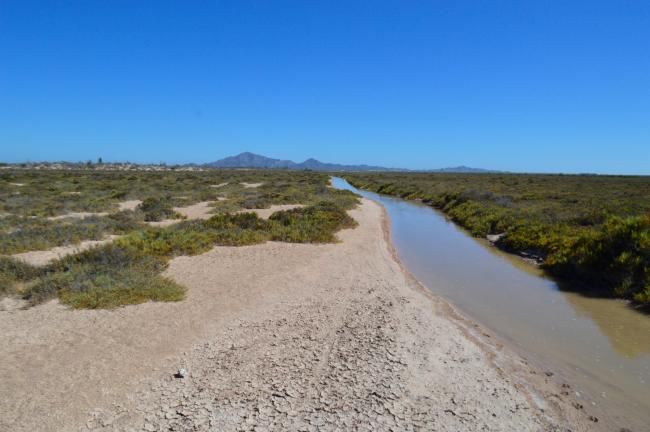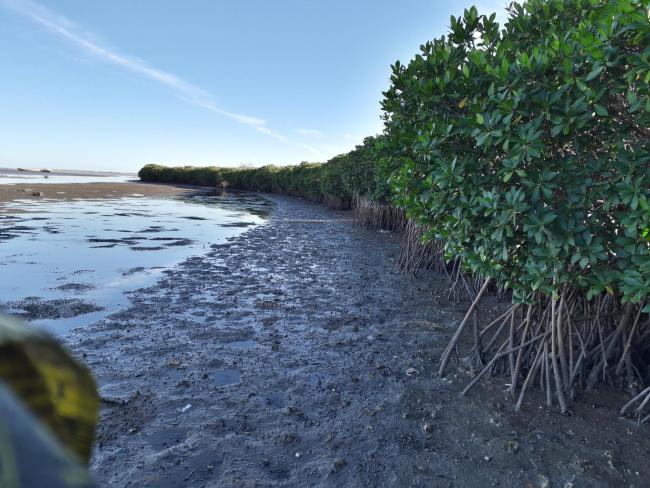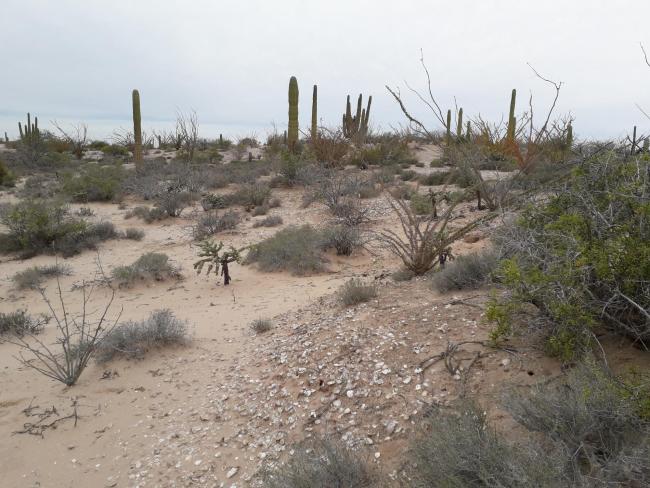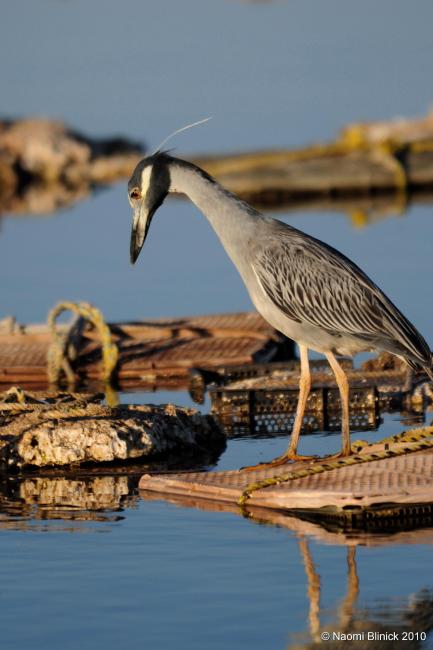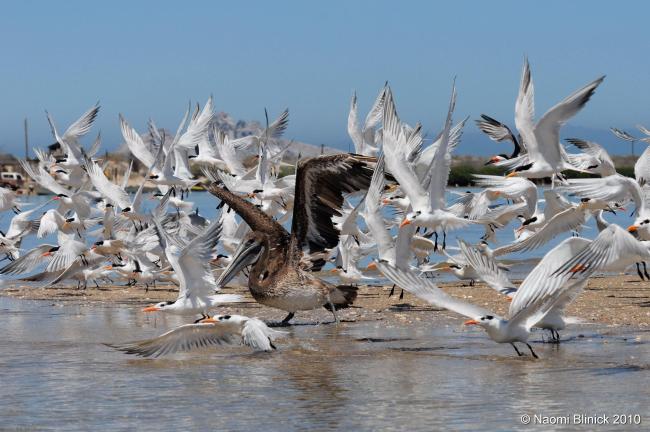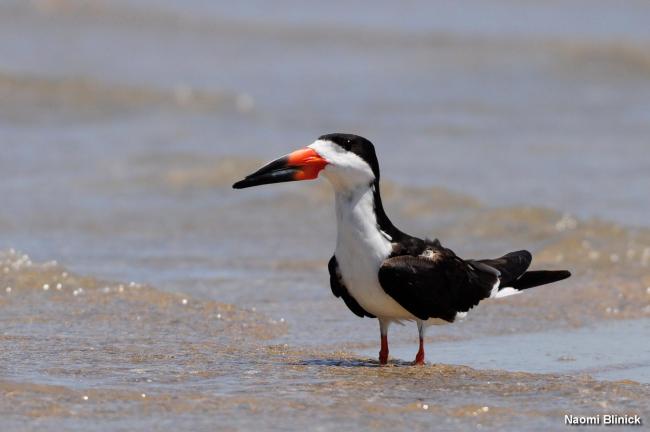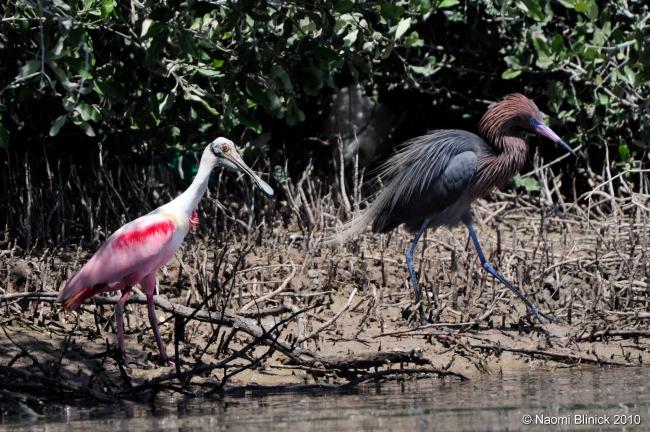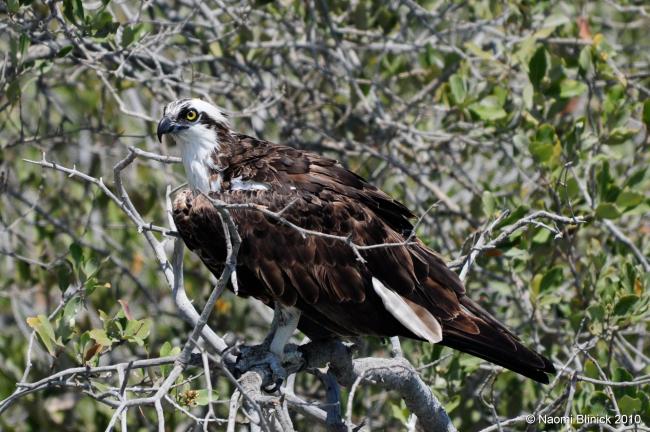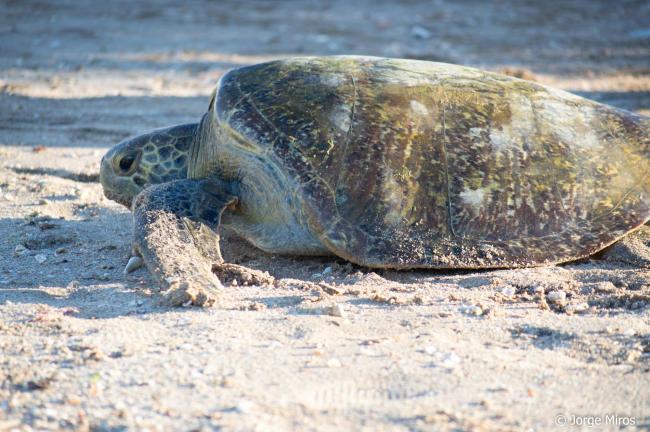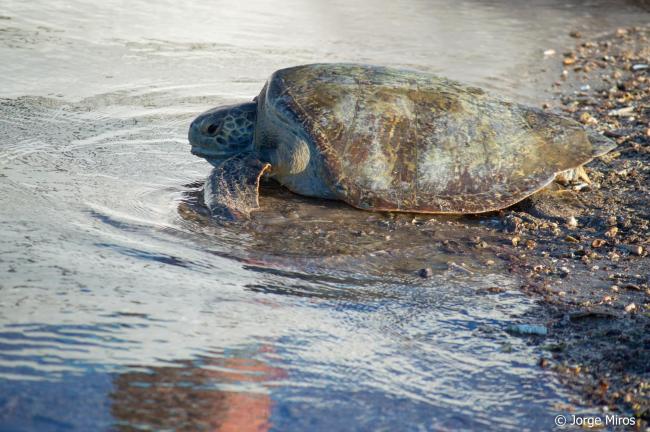Humedales de la Laguna La Cruz
Humedales de la Laguna La Cruz
- Country:
- Mexico
- Site number:
- 2154
- Area:
- 6,665.2 ha
- Designation date:
- 02-02-2013
- Coordinates:
- 28°47'14"N 111°52'52"W
Carousel
CarouselMaterials presented on this website, particularly maps and territorial information, are as-is and as-available based on available data and do not imply the expression of any opinion whatsoever on the part of the Secretariat of the Ramsar Convention concerning the legal status of any country, territory, city or area, or of its authorities, or concerning the delimitation of its frontiers or boundaries.
The Site consists of a coastal lagoon with mangroves, marshes, mudflats and salt marshes, and a group of “tómbolos” (islets) within the Gulf of California Islands Flora and Fauna Protection Area. It is an important wintering, feeding and breeding area for nationally and internationally protected wildlife species. This wetland is home to the northernmost nesting area of the roseate spoonbill (Platalea ajaja) along the North Pacific coast. Sightings of bottlenose dolphins (Tursiops truncatus) and sea lions (Zalophus californianus) have been recorded at the mouth of the lagoon, showing transitional, resting and feeding behaviours. It is a feeding and refuge site for the globally endangered green sea turtle (Chelonia mydas) and there is also one endangered fish species (Totoaba macdonaldi). The area is home to two of the four mangrove species found in Mexico: the red mangrove (Rhizophora mangle) and the black mangrove (Avicenia germinans). It offers a wide variety of ecosystem services, many of them of great importance to the livelihoods of local communities, which practice fishing and oyster farming. Poaching and intensive fishing pose a threat due to the overexploitation of species such as crab (Callinectes spp.) and the catching of sea turtles (Chelonia mydas). A management plan was being prepared as of 2025, with discussions underway with local stakeholders and the municipal government to establish a strategy to reduce solid waste dumping.
- World Heritage site
- Área de Protección de Flora y Fauna - Islas del Golfo de California - Sonora
- MX2154RIS_2507_es.pdf
- MX2154RISformer_221116.pdf
- MX2154_map221230__Vértices_Polígono.pdf
- MX2154_map221231.jpg
